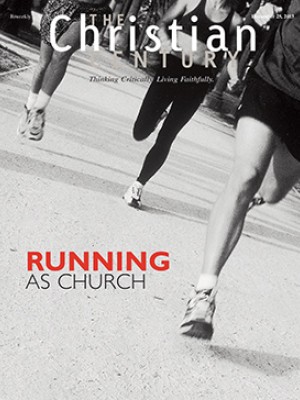John Updike: The Collected Stories, edited by Christopher Carduff
To reread John Updike is to remember just how upper-middle-class and masculine his fictional universe is. There are so many beaches, summer homes, reclining chairs, dentists, affairs, books, clergy, port and brandy, golf games, and trains to and from cities and suburbs.
But of course, Updike was also a great storyteller and a master of the short story. “Ace in the Hole,” his first, was published in the New Yorker when Updike was only 23, just graduated from Harvard.
Updike was the son of WASPs, and religion always haunted him, in spite of—or perhaps because of—the suburban trappings. The secular often stands in for the lost sacred in the lives of his characters. For instance, in “Intercession,” an early story, golf replaces a priest for the aptly named character Paul. And in a two-page tale titled “Archangel,” Updike wrote from the perspective of the angelic, explaining, “My pleasures are as specific as they are everlasting. . . . The freckles on the closed eyelids of a woman attentive in the first white blush of morning. The ball rapidly diminishing down the broad green throat of the first at Cape Ann.” That’s Updike’s local golf course in Essex, Massachusetts, according to editor Chris Carduff, in a note at the back of volume one of this set.
Read our latest issue or browse back issues.
“Pigeon Feathers” is an altogether different story, a powerful statement of lost faith. A youth named David discovers H. G. Wells’s The Outline of History in his parents’ library and reads, to his astonishment, that someone actually believes that Jesus was not divine and didn’t die for our sins. “If true,” David thinks, this collapses everything he knows “into a jumble of horror.” So David takes his concern about Wells to his local pastor, the Reverend Dobson, whom Updike memorably characterizes as one “on whose lips the word ‘Christ’ had a pugnacious juiciness.” But the reverend makes the situation worse in how he answers the boy’s questions; it turns out that he takes a liberal view of such matters. David is horrified, and he finds the resolution to his dilemma outside of church. I won’t spoil the ending, which involves both pigeons and feathers, but the story moves at such a pace it almost crackles. David begins as a simple receiver of truth and evolves into a creator of it. The change isn’t a positive one.
The much anthologized “A&P,” also from Updike’s early work, is his most read story. It has spiritual overtones as well as a secular epiphany, as do most of the tales, and modern consumerism and gender politics are the occasions of enlightenment.
Many of the later stories, included in volume two of this set, carry religious and spiritual themes—often behind the scenes, like echoes resounding. References to Kierkegaard mix with stories of marital affairs and tales of embezzlement; in the story “The Afterlife,” “a small, drab Victorian church” quietly stands like an emblem of what once was.
One late story isn’t as well known as it deserves to be. “Varieties of Religious Experience” riffs on William James while looking closely at the life and falling faith of a 64-year-old Episcopalian and probate lawyer. It begins: “There is no God: the revelation came to Dan Kellogg in the instant that he saw the World Trade Center South Tower fall.” Then Dan argues with himself and others about God and God’s absence. Throughout the story, Updike returns again and again to mention of “Dan’s revelation,” as if it could even be divine.
“Varieties of Religious Experience” watches Dan struggle, but it also gives alternating scenes of the terrorists who perpetrated the crimes, in the days leading up to 9/11. We see Mohamed and Zaeed at a strip club drinking Scotch, leering at strippers and quoting violent passages from the Qur’an. The narrator allows us to see the world through their eyes and brains, as the men describe the women around them as “sluts” and “whores” and compare them to those they will soon see in Paradise, “where sloe-eyed virgins wait, on silken couches, among flowing rivers, to serve the martyrs delicious fruit.” Next we meet a family man talking with his wife as a tower falls. And then we are on a plane just before it goes down in a Pennsylvania field. Finally, six months later, we are witness to Dan’s evolving doubts as they reflect on loss, the words of Thomas Cranmer, the Nicene Creed and mystery—and all of it is religious experience.
Updike once described his purpose in writing short stories as “to give the mundane its beautiful due.” That he does, and perhaps it is because we find ourselves so easily in his fiction that it is worth reading again and again.






